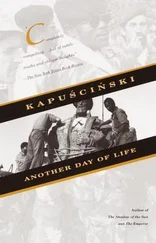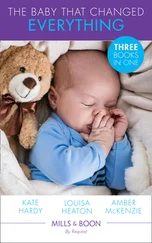George Dow - Every Day Life in the Massachusetts Bay Colony
Здесь есть возможность читать онлайн «George Dow - Every Day Life in the Massachusetts Bay Colony» — ознакомительный отрывок электронной книги совершенно бесплатно, а после прочтения отрывка купить полную версию. В некоторых случаях можно слушать аудио, скачать через торрент в формате fb2 и присутствует краткое содержание. Жанр: foreign_antique, foreign_prose, на английском языке. Описание произведения, (предисловие) а так же отзывы посетителей доступны на портале библиотеки ЛибКат.
- Название:Every Day Life in the Massachusetts Bay Colony
- Автор:
- Жанр:
- Год:неизвестен
- ISBN:нет данных
- Рейтинг книги:3 / 5. Голосов: 1
-
Избранное:Добавить в избранное
- Отзывы:
-
Ваша оценка:
- 60
- 1
- 2
- 3
- 4
- 5
Every Day Life in the Massachusetts Bay Colony: краткое содержание, описание и аннотация
Предлагаем к чтению аннотацию, описание, краткое содержание или предисловие (зависит от того, что написал сам автор книги «Every Day Life in the Massachusetts Bay Colony»). Если вы не нашли необходимую информацию о книге — напишите в комментариях, мы постараемся отыскать её.
Every Day Life in the Massachusetts Bay Colony — читать онлайн ознакомительный отрывок
Ниже представлен текст книги, разбитый по страницам. Система сохранения места последней прочитанной страницы, позволяет с удобством читать онлайн бесплатно книгу «Every Day Life in the Massachusetts Bay Colony», без необходимости каждый раз заново искать на чём Вы остановились. Поставьте закладку, и сможете в любой момент перейти на страницу, на которой закончили чтение.
Интервал:
Закладка:
Counterpanes and Coverlets
In the early days our forefathers were dependent upon the open fireplace and during the winter season everyone must wear thick clothing and provide an ample supply of warm coverings for the beds. Those were the days of warming pans and heated bricks taken to bed by both children and grown-ups, and of feather beds, comforters and patchwork quilts.
Bed coverings in the olden times, and even in our day, have a variety of names with distinctions sometimes difficult to classify. Sometimes they are counterpanes, and again coverlets. A comforter suggests warmth and comfort not only for the bed but for the neck. The bed cover is universal as is the quilt .
The patchwork quilt was formerly one of the most familiar and necessary articles of household furnishing and its origin reaches backward into the dim and unknown past. It was brought to the Massachusetts Bay by the first settlers. In cottage and castle it was known in the days of King John, and down through the generations its making supplied occupation and amusement to countless women whose life interests centered in their homes and household furnishings. Its manufacture may well be styled one of the household arts, for artistic indeed are the bold conceptions of many of the designs; while the piecing and the patching provide ample opportunity for needlework of the finest character.
In the early days the English spelled quilt with a final e – quilte – as did the French. It is a cover or coverlet made by stitching together two thicknesses of a fabric with some soft substance between them. This applies to bed covers and also to quilted petticoats so commonly worn in the old days.
What is a coverlet? Originally, any covering for a bed; now, specifically, the outer covering. The word comes from the French couvre-lit – a bed covering. The handwoven coverlets of many beautiful designs, in blue and white and red and brown, are well known and formerly were woven everywhere.
The counter-pane , formerly a bed cover, now describes a light coverlet woven of cotton with raised figures. The word is a corruption of counterpoint , in allusion to the panes or squares of which bed covers are often composed. The counterpane was never quilted.
The bedspread and the bed cover may be considered as one and the same – the uppermost covering of a bed and accordingly of an ornamental character in general. The comforter was a thickly quilted bed cover made of several thicknesses of sheet cotton or wool prepared for the purpose. This was too thick to be quilted so it was knotted at regular intervals to prevent the interlining from slipping out of place. Frequently it was called a "comfort."
There is one other name that was applied to a bed covering in the Colonial times but which is never heard today in that connection. In the days immediately following the settlement many a New England bed was covered with a rug . When William Clarke of Salem died in 1647, in the parlor of his house was a bed with a green rug covering it which was valued by the appraisers at fourteen shillings. The term was commonly in use at the time, in fact, as commonly as the word coverlet. In the probate of Essex County, Massachusetts, estates between the years 1635 and 1674, coverlets are mentioned one hundred and forty-two times and rugs one hundred and fifty-seven times while quilts are listed only four times. These early bed rugs were usually thick woolen coverings with a shaggy nap.
A never-failing source of accurate information as to the furnishings and equipment of the New England household in the olden time is the probate records – specifically, the inventory of the property taken in connection with the settlement of the estate. For many years it was the well-nigh universal custom to list, room by room, the contents of a house and from these painstaking inventories it now becomes possible to reconstruct in mental picture the interiors of those homes where lived and died our Puritan ancestors. In connection with the present subject we learn from these inventories that it was quite the usual habit to set up a bed in the parlor and we also learn of the existence of different kinds of rugs used in the bed furnishings – cotton rugs, English rugs, Irish rugs, cradle rugs, etc. There were worsted coverlets, tapestry coverlets and embroidered coverlets. A darnacle coverlet is listed in 1665; but as darnacle curtains appear in the same inventory it is safe to assume that darnacle is the name of some long-forgotten fabric. But what is a "branched coverlet?" Mrs. Thomas Newhall of Lynn possessed in 1674 a green rug and a branched coverlet.
Capt. George Corwin of Salem who died in 1684, had a calico counterpane in the red chamber in his house. In the corner chamber was a green counterpane and in the kitchen chamber was a sad colored counterpane, two coverlets, and a quilt of colored and flowered calico.
Let us have a look at a few of these wills and inventories. In 1640, the widow Bethia Cartwright of Salem, bequeathed to her sister, then living in England, her bed, bolster, blanket and coverlet. It is an open question if the value of the property equalled the probable cost of transporting it to that loving sister in distant England.
Mrs. Joanna Cummings of Salem, at her death in 1644, among many other items possessed a feather bed, flock bolster and a green rug, jointly valued at £2. 5. 0.
In the "hall" of John Goffe's house, in Newbury, in 1641, were found "3 bedsteeds, £1; 1 pr. curtains with 3 rods, 18s.; 1 green rugg, £1. 6.; 2 blankets, 15 s.; 1 bed, bolster and 4 pillows, £4. 10.; 1 coverlet, 10s.; and 1 bed matt, 2s."
The next year William Howard, afterwards the first town clerk of Topsfield, was one of the appraisers of the estate of Samuel Smith of Enon, the name by which Wenham was then known. In one of the chambers he found a "bed, blancits & coverlet" which he valued at £7. 8. Rather a valuable bed, or, may it have been the coverlet? In connection with "cobbard clothes" at £1. he lists a "carpitt" at 15s; and this carpet, curiously enough, he did not find on the floor but on a table. Joanna Cummings owned a "carpet & table" that were valued at 7s. 8d. Joseph Metcalf of Ipswich had "a table & old carpett" worth £1. In the parlor of Governor Endecott's house in Boston were found a "Table, Carpet & 3 stools," valued at 50s. William Bacon's "carpets & qushens" were worth £1. 10s. and in the inventory of the estate of Rev. Ezekiel Rogers of Rowley, appears the following: "a presse and a litle Table with ther Carpets, £1. 10s."
John Whittingham lived in Ipswich and died in 1648. In the parlor of his house was found a "Joyne Table with Five chairs & one ould Carpet, 10s.; one cupboard and Cloth, 10s.; 2 paire Cobirons, 15s.; two window Curtains and curtaine rods, 6s.; one case of Bottles, 5s.; Books, £6. 5s.; Eleven Cushions, £1. 10s.; one Still, 5s.;" and perhaps most important of all – "one fetherbed, one flockbed, two boulsters, one pillow, one p. blankets, one Rugge, Curtains & valients and bedsted, £12." In the chamber over the parlor was another bedstead well supplied with furnishings, including two quilts, a blue coverlet and a trundle bed. This upstairs chamber had wall hangings which were valued at £2. 10s. and in the room were six trunks, a chest and a box, containing stores of bed linen, table cloths, napkins, hose yarn, silver plate and eleven spoons. Two chairs, four stools, a screen, two pairs of cobirons and a pair of tongs completed the furnishings of the room. It almost stands open before us. And those wall hangings valued at £2. 10s.!
Another parlor chamber in a house in Newbury, in which had lived the minister, the Rev. James Noyes, was more meagerly furnished. Here the appraisers found "2 boxes, 4 hogsheads, a musket and a gun and two swords, £2.; a bolster and a quilt & two blankets and a parsell of Cotton wooll, £3. 10s."
Читать дальшеИнтервал:
Закладка:
Похожие книги на «Every Day Life in the Massachusetts Bay Colony»
Представляем Вашему вниманию похожие книги на «Every Day Life in the Massachusetts Bay Colony» списком для выбора. Мы отобрали схожую по названию и смыслу литературу в надежде предоставить читателям больше вариантов отыскать новые, интересные, ещё непрочитанные произведения.
Обсуждение, отзывы о книге «Every Day Life in the Massachusetts Bay Colony» и просто собственные мнения читателей. Оставьте ваши комментарии, напишите, что Вы думаете о произведении, его смысле или главных героях. Укажите что конкретно понравилось, а что нет, и почему Вы так считаете.












